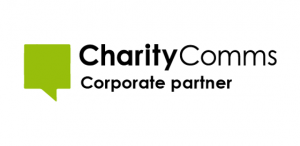Fundraising using Facebook Ads used to be all about interest targeting. Which unique combination of location, language, age, gender and interests would give you the magic formula of acquiring the most donors for the least cost?
But Facebook has been saying for a while now that their algorithm is better at finding the best supporters and donors for your cause than you are.
What this means for charities using Facebook Ads is that you need to trust the algorithm, which is exactly what we’ve been recommending to clients of our Facebook Ads Agency.
In this article:
Switching to broad targeting
Instead of building audiences that are highly targeted and extremely granular, you need to broaden those audiences out.
For example, if you’re targeting women, aged over 40, living in London, who are interested in knitting and gardening, broaden that targeting out to just target women aged over 35.
If you have a lookalike audience of 1%, broaden that out to 3%, 5% or even 7% and see if that brings you more results. Facebook‘s algorithm bets that it can.
When target broadly, you allow Facebook’s algorithms to find new audiences for your ads and you no longer manually restrict the potential of your audiences.
Using campaign budget optimisation
Another way to take advantage of this is by using Facebook’s campaign budget optimisation feature.
By turning this feature on, you are allowing Facebook to shift budget between ad sets automatically and then weight budget towards the ad sets that are driving the best results for your organisation.
Here’s where to look for this feature in Facebook Ads Manager:

Campaign budget optimisation example
How does Facebook’s campaign budget optimisation feature work in practice?
For example, you might have $30 split between 3 ad sets and each spend $10 equally.
But by turning campaign budget optimisation on, Facebook’s algorithm will weight budget towards the best performing ad set, so you might have one ad set that spends $18 and the rest spend $7 and $5 between them.
But that’s ok, as you’ll be driving the most results for the least cost and that’s where Facebook algorithm comes in to help you. In this example, the campaign using campaign budget optimisation drives 50% more conversions than the campaign using manual budgets.
Here’s how that looks, using this illustration from AdEspresso:

Testing Facebook’s algorithm
What can your organisation do to take advantage of Facebook’s algorithm for your fundraising campaigns?
Here’s what we recommend you try to test this out:
- Switch to campaign budget optimisation: If you’re still using manual budgets, switch to campaign budget optimisation to see if that improves your results.
- Use top-level targeting such as location, age and gender: Whilst you do not want to dramatically focus your audience, you still need to make sure that you are targeting relevant audiences
- Exclude people who have donated to you before: You could also set up this restriction for a period of time such as excluding people who have donated in the last 90 days.
- Don’t exclude all of your website visitors: This may seem like a good idea if you are looking for new supporters. However, Facebook’s algorithm learns as the campaign runs, so having some website visitors in the your targeting has been shown to help Facebook’s algorithm get a better idea of the best audience to show ads to.
- Expand your lookalike audiences: instead of focusing on 1% lookalike audiences, expand that to 3-5% to give the algorithm breathing room to find new audiences.
As always, we recommend that you test each of these points to see what works best for your organisation. But we see time and again in the organisations that we work with, that the answer is in the algorithm.
And if you need help with your Facebook Ads management, then contact the Empower team.




